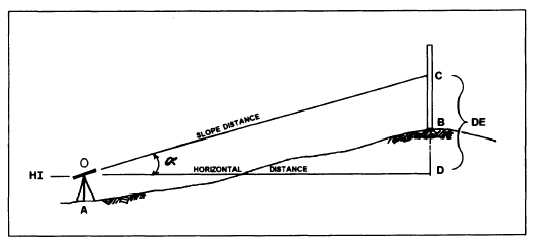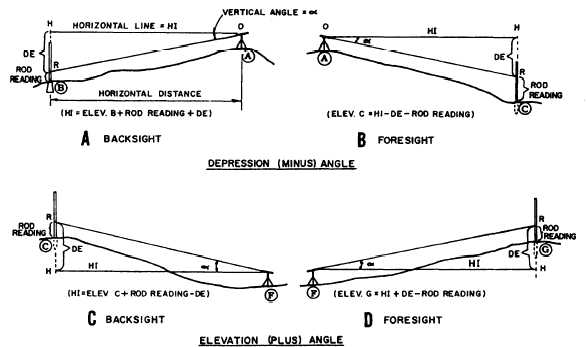Figure 7-2.—Difference in elevation in trigonometry leveling.
Figure 7-3.—Lines of indirect levels.
In figure 7-2, a transit is setup and leveled at A. The
intersection of your line of sight with the rod (point C).
rodman holds a rod on B. The instrumentman trains the
Computing the DE consists of multiplying the measured
telescope on C, which is an easily read value (usually a
distance by the proper trigonometric function of the
full foot) on the rod. With the telescope trained on C, the
measured angle (sine, when slope distance (OC) is
vertical angle (a) is read. Then either the horizontal
measured; tangent, when horizontal distance (OD) is
distance or the slope distance between the instrument
measured).
and rod is determined. Now one side and one angle of a
The following paragraphs discuss typical situations
right triangle (OCD) are known. From your knowledge
that you will encounter in trigonometric leveling. You
of trigonometry, you know that the other sides and angle
will see in each of these situations the reamer in which
can be computed. However, in trigonometric leveling,
the computed DE is applied to determine the HI and
you are concerned only with determining the length of
required elevations.
the side opposite the measured angle (side CD). The
length of this side is the difference in elevation (DE).
1. DEPRESSION ANGLE BACKSIGHT (fig.
As-you can see in figure
between the height of
7-2, the DE is the distance
7-3, view A). The rod is on point B below the instrumerit.
instrument (HI) and the
The measured vertical angle (a) is a depression (minus)
7-3



